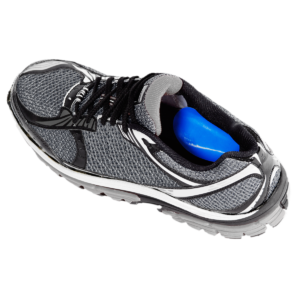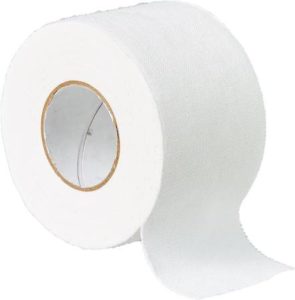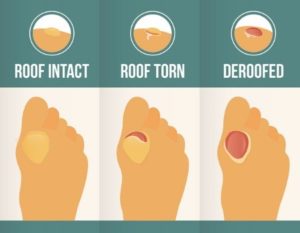Just last week, South Korean tennis professional, Hyeon Chung, was forced to retire in a heartbreaking loss against Roger Federer at last week’s Australian Open. If you follow professional tennis, you’ve probably noticed a rise in the number of tournament-ending losses due to excruciating foot blisters that some of the world’s top tennis players have suffered.

What’s going on with all of these blisters, you might wonder? Don’t these athletes wear proper fitting shoes and high quality socks? The probable answer to these questions is yes, certainly they do. But, well-fitting footwear and moisture-wicking socks are only the first two components of foot care when developing a plan to fend off blisters when training and competing.
Before stepping out on the court, it’s equally important to have a proper supply of tried & true foot care products to quickly and effectively treat hot spots and blisters, should they develop during a match. If you’ve experienced blisters in the past, patching those “at-risk” spots on your footwear with ENGO Blister Prevention Patches is a great way to reduce friction levels in targeted areas from developing into a full-blown, tear-jerking blister.
 Athletic tape has its purpose but, having your feet wrapped up like a mummy is certainly not the answer. Not only can blisters still form, since athletic tape only protects the skin against surface rubbing, but tape adds bulk to your footwear, changing how your shoes fit and potentially adding pressure in places that will lead to more blisters. At minimum, if taping is unavoidable, refer to John Vonhof’s Taping for Blisters post on his Fixing Your Feet website to explore the best tapes for the job.
Athletic tape has its purpose but, having your feet wrapped up like a mummy is certainly not the answer. Not only can blisters still form, since athletic tape only protects the skin against surface rubbing, but tape adds bulk to your footwear, changing how your shoes fit and potentially adding pressure in places that will lead to more blisters. At minimum, if taping is unavoidable, refer to John Vonhof’s Taping for Blisters post on his Fixing Your Feet website to explore the best tapes for the job.

Image © Rebecca Rushton
Additionally, foot blisters most commonly develop within tissue layers from repetitive loading shear forces – not rubbing. With court sports, such as tennis and basketball, sudden accelerations, decelerations, and changes in direction wreak havoc on your feet; causing intense shearing forces between the 26 bones in your feet and the surrounding tissue. As the level of activity increases, micro-tears form beneath the skin surface. If left ignored, a full-blown blister is not far behind.
If you find yourself in a situation where a blister has already developed, but you’re not ready to throw in the towel, here are a few helpful tips to help get you back on the court:
- Properly clean the blister area with an antiseptic
- Use a proper blister dressing (an island dressing for a standard blister or hydrocolloid for a de-roofed blister)
- Reduce pressure around the area, if possible, using self-adhesive orthopedic felt, or similar type of dressing surrounding the blistered area
- Last, but certainly not least, reduce friction in the affected area with ENGO Blister Prevention Patches. Not only will it help with discomfort or pain (less friction over the wound = less pain), but it will also help ensure the blister dressing does not come loose. Additionally, since the Blister Prevention Patches are not a one-time-use solution, they’ll permanently address the friction & shear components that caused the blister to form in the first place.
Need more advice about properly preventing (when possible) and treating foot blisters, check out Australian Podiatrist, Rebecca Rushton’s website for a wealth of information, videos, and top-notch documents to help keep you blister-free: https://www.blisterprevention.com.au/blister-blog/
Please note: the aforementioned information is not intended to serve as or replace medical advice and treatment by a licensed healthcare provider. We always recommend consulting with your primary care provider or specialist (such as a podiatrist or pedorthist) with any questions about your healthcare and the products you use to manage various medical issues.

Millie Hue
Thanks for pointing out that having self-adhesive orthopedic felt will reduce the pressure to keep the blister safe. I guess I need to consult with a podiatrist to buy the right type of material. I just have these blisters because the training has become longer now that we are competing in a bigger league next year.
Rachel Mattson, Customer Service
You’re welcome! Consulting with a podiatrist can be very helpful with blister and foot problems. Hope you are able to find relief and try our ENGO patches. https://goengo.com/